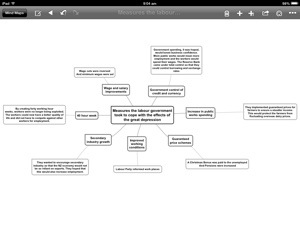The Labour government introduced a number of reforms which benefitted one of the largest sections of the New Zealand work force. These reforms helped many women out of the Depression. These changes also benefitted children in the long term too. Women were given better work opportunities and more pensions/benefits.
Solo mothers with children became eligible for the widows benefit in 1936. Being able to have this benefit was later extended to wives whose husband’s whereabouts were known and to deserted wives who had no dependent children. This benefitted the children of the mother who was getting the benefit as it would allow them to get clothes/shelter/food/warmth, it also helped the women as it would make it easier to provide for themselves and their children if they had any.
A ‘needy families’ scheme provided assistance, primarily by re-housing large or poor families to maintain the household unit. This benefitted the members of those families as it gave them a place to live/sleep and a place to keep them warm and safe.
The age at which women were entitled to receive old-age pensions was reduced from 65 to 60. This benefitted the women of 60 so it gave them a choice to being able to retire so it wasn’t so hard for them.
In 1936, the government graduated the wages of young people so that year by year their rate of pay automatically increased until it reached a minimum standard wage when they reached the age of 21. The aims of this were to prevent the exploitation of young people’s labour (especially women’s) and lack of bargaining power, and to prevent employers from sacking apprentices. This benefitted the younger generation it helped them with their wages and so their job was stable
Teaching colleges were reopened and the school starting age was put back to 5 years old. This benefitted both teachers and children as it would help the adults get a better education themselves so they could teach them things and it helps the children for when they were older so their knowledge could get them somewhere in life
Which groups benefitted most from labours Welfare reforms?
Maori benefitted the most because whole villages were moved to better places. They got the same types of benefits and pensions. Their education was pushed so they could get somewhere. As education grew they built new schools and gave scholarships. They taught teachers Maori so then they could help out the Maoris so they were equal.
A) Farmers
B) Maoris ❗️
C) Women
D) All Three
E) A different answer
Cradle to grave – willing to support the people from when they are born, in a cradle to the grave which is when they are old and can’t look after themself
I think they achieved this goal because many of the people needs were covered for example young children were given free milk and schooling to help them with there education, then as they got older they gave people fair wages and benefits and gave out scholarships. For the older generation they gave out pensions so they could support themselves and their families when they couldn’t work anymore.



